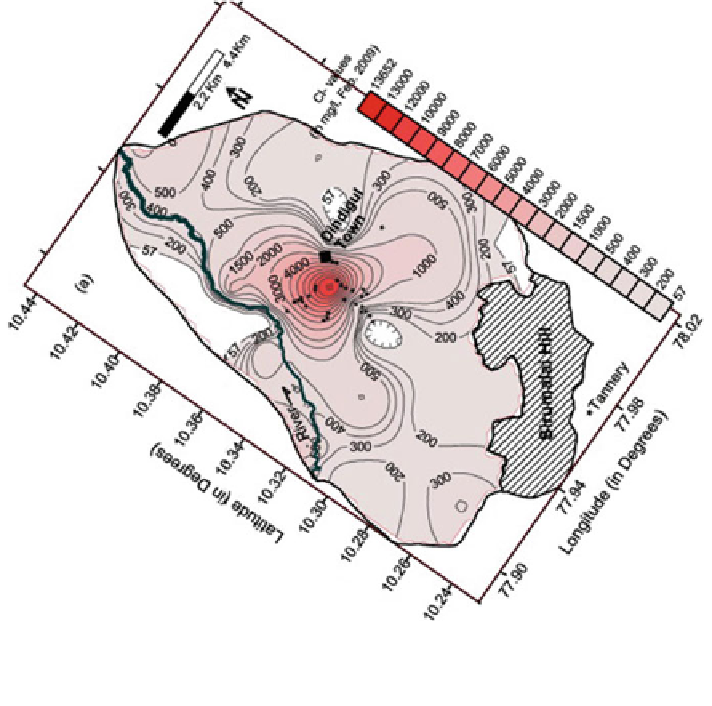Geoscience Reference
In-Depth Information
Fig. 17.2 Variation and the distribution of chloride in groundwater under a tannery belt (Mondal
and Singh
2011
). Reprinted from Mondal and Singh (
2011
). Copyright (2011) with permission
from Elsevier
crop-fallow farming, about 90 t/ha salts had moved under natural precipitation
toward the groundwater. A similar effect of farming on salt accumulation in
groundwater was observed in Australia, where the chloride concentration beneath
a forest catchment was 70-400 mg/L, while that under a cleared farmland was
160-3,000 mg/L (Peck and Hurle
1973
).
Downward transport of salts from land surface to groundwater may be observed
following waste effluent disposal. An example is the case of groundwater salini-
zation under the disposal of untreated effluents from 80 functioning tannery plants
forming a tannery belt in southern India. Mondal and Singh (
2011
) determined the
chloride distribution in groundwater in 29 locations below the tannery belt
(Fig.
17.2
). Abnormal concentrations of chloride ranging from 57 to 13,652 mg/L
were reported.
Flooding of a nonsaline area by saline waters is another aspect of groundwater
salinization under downward flow. An example of this salinization pathway is
given by McCarthy (
2006
), who reported increased groundwater salinity following
flooding of the Okavango River in the Okavango Delta (Botswana, South Africa).

